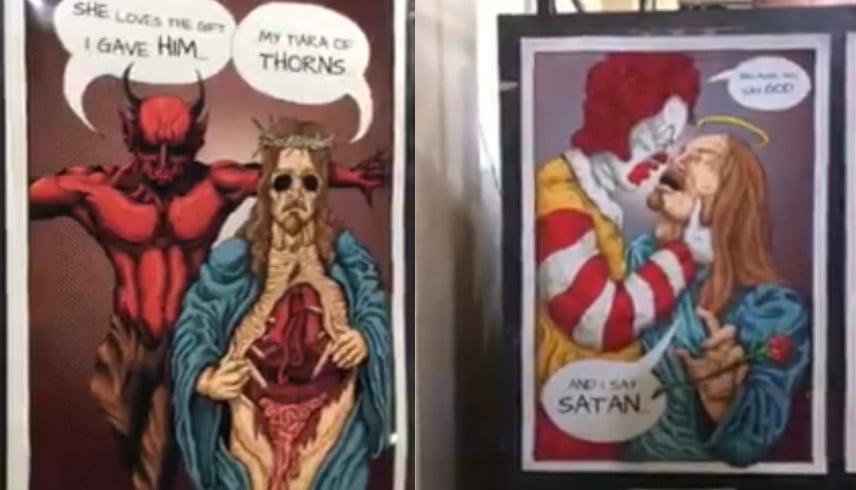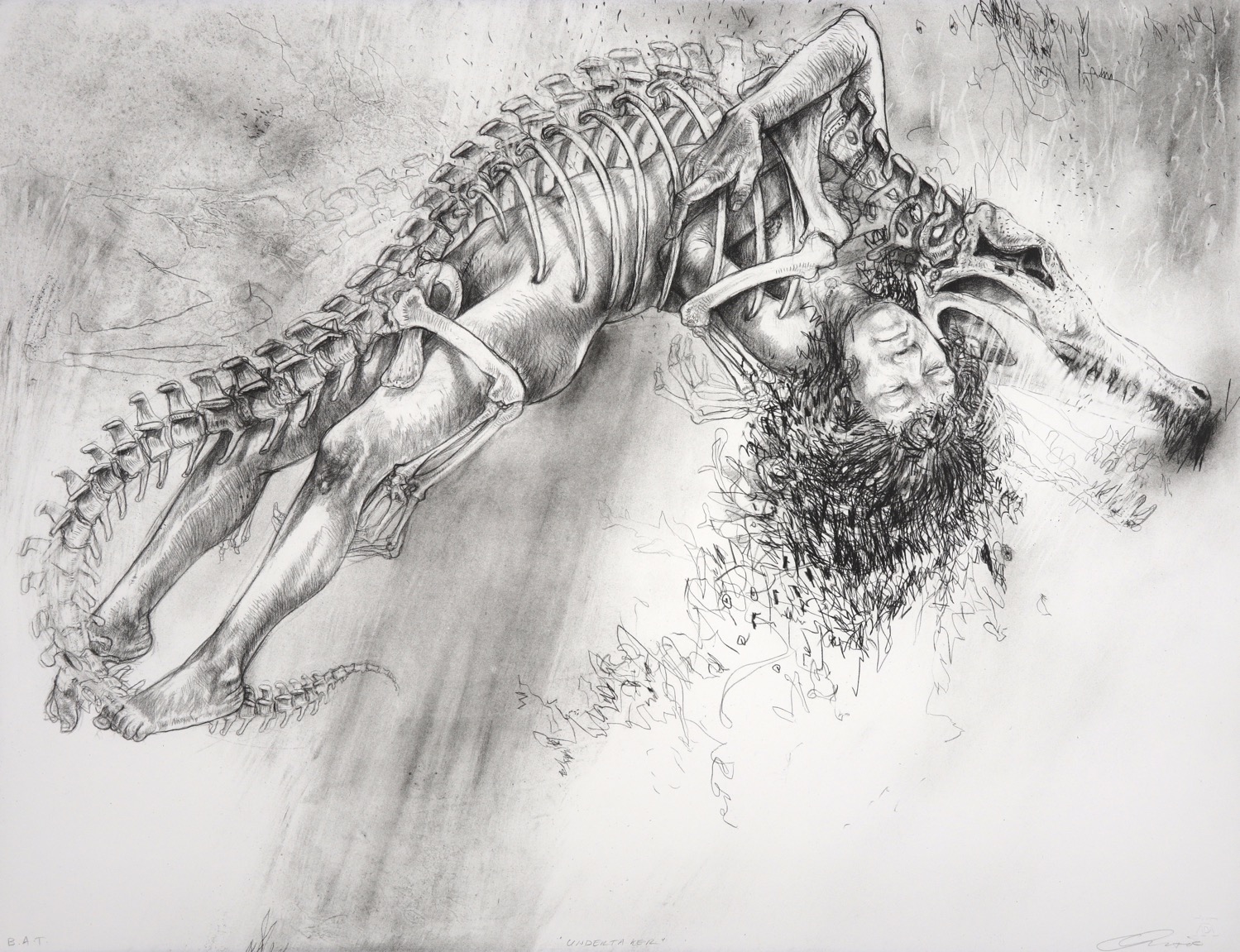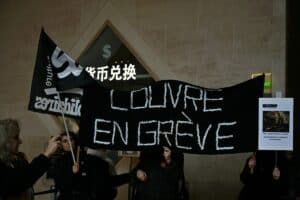On the surface of the matric pupil’s work there is a celebration of figures that moved SA art forward and cultivated it.

If South Africa was more art literate, the video of an upset father berating a matric pupil’s final art project at a Curro School in KwaZulu-Natal would have played out differently this week.
The man starts by saying: “My kids have been in this school for many years. I love this school. I love the teachers. But today is my child’s last school day and I’m so upset – I’m not emotional, I’m upset.
“I walked into the school hall and there’s artwork being displayed from the matrics … and it broke my heart … because it felt like we were crucifying Jesus all over again.”
The dad then walks down the exhibition space, filming the images on display, of religious figures, some depicted as likes of the clown Ronald McDonald, skulls, pills and torn-up paper.

Screengrab from a video of artworks which were displayed at the Grantleigh Curro school in Richard’s Bay.
The dad says: “Look, here. All these pictures of demonic forces and demonic things taking place.”
“If this is to God be the glory, I don’t know what is to God be the glory,” he says, as he points out a torn up Bible.
“It’s a disgrace,” he rants. “We need to stand up against this. Let us protest against the school. If they did this to the Quran, there would be war.”
He is right to be not emotional, but upset. He is witness to really bad art, the kind you find at festival grounds and school fetes.
In the real world the dad just had his first introduction to the SA art landscape, which often features similar imagery to the matric art project in the video. The dad doesn’t even know what these images represent …

A photograph from Roger Ballen circa 2014 called’ Beseeched’. Picture: Supplied
In the last few years, Poppy has become an internet sensation. While her videos have become part of the oddities of YouTube, her catchy pop song is often offset by occultist imagery in bright pastel.
Lowlife features a bright-red devil in what can only be described as a R5 Halloween costume. It functions as in-your-face commentary.
Her latest work from her album Am I a Girl is centred around irreverent satanism. Baphomet, heightened leather fetishism, blood and possessed eyes are staples in the music videos for her songs X, Concrete, Scary Mask and Voicemail. But Poppy is considered bad art.
Talking to New York Magazine, art critic Jerry Saltz last year said Poppy is simple derivative art, art within art, that makes fun of art.
An installation from Conrad Botes’ House of Judas exhibition. Picture: Conrad Botes.
Essentially it means it’s art that sort of exists because other art exists. It pulls from other art movements to establish itself in the current context.
Poppy aims to look at society – but in terms of her music, it’s simply just imagery to get a reaction.
The matric pupil was able to do the same and that proves there is a next generation of artists who will build on the traditions of masters like Diane Victor, Judith Mason, Conrad Botes, Zander Blom, Roger Ballen and Anton Kannemeyer.
These artists have all used images featuring horned figures to give comment on society in SA.

Diane Victor’s ‘Undertaker’. Her work often reflects the same sort of sketches the Curro pupil exhibited – where humans are deconstructed into beastly figures. Picture: Supplied
Artists like Jane Alexander gave strong anti-apartheid sentiments, while contemporary artists like Blom and Botes allude to all sort of inequalities in modern society in their works.
Horned figures and clowns are so ingrained in SA’s art history, how can a pupil not draw from this rich tapestry? On the surface of the matric pupil’s work there is a celebration of figures that moved SA art forward and cultivated it.
I’m not emotional, but upset that this dad didn’t know about this side of his own country’s art history. And that makes me think this matric pupil might have trolled us all in the most abstract way possible – by using inspiration from SA to upset a whole new audience.
If there’s ever been budding artists, this pupil is on the top of the list.
For more news your way, download The Citizen’s app for iOS and Android.






